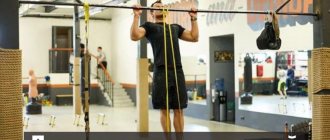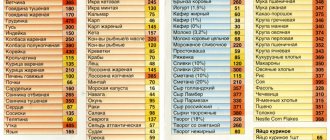Aerobic and anaerobic exercise - what is it? What are their differences? Not everyone can answer this question, especially if you are far from sports. You can also get confused about these terms. Let's try to figure it out.
The sport is increasingly gaining momentum in its popularity every year. Today, playing sports is fashionable. But we have to agree that such fashion has a great effect on the athlete’s appearance, health and self-esteem. Of course, if you do it right.
There are two types of loads that have their own characteristics
- Aerobic (cardio) exercise is understood as a set of exercises aimed primarily at strengthening the cardiovascular system and losing weight.
- Anaerobic (strength) exercise is training whose goal is to develop muscles and gain muscle mass. Is this understanding correct? How should sports activities be structured to achieve the desired effect? Let's try to find out as much as possible about these types of loads.
Aerobic exercise
What muscles work during aerobic exercise?
Muscle fibers are divided into “white” - fast and “red” - slow. There are no completely fast or slow muscles. Each muscle contains both types of fibers. White ones contain a lot of glycogen, a product of glucose metabolism. They are trained during short explosive loads, such as the barbell bench press or the 100-meter sprint. Red fibers have a good blood supply and oxidative processes occur well in them. The ratio of red and white muscles is individual for each person; long running will be easier for those who have more red fibers in their muscles. You can understand which fibers a person has more by taking a tissue analysis - puncture.
Types of workouts
Depending on the source of energy for the muscles, as well as the heart rate and goals of the exercise, sports disciplines can be either aerobic or anaerobic. Let's look at each type.
Aerobic training
Exercises or full-fledged sports activities performed at a relatively low intensity. In this case, oxygen acts as the main element in maintaining energy balance. During such training, rapid aerobic breathing occurs, which strengthens the cardiovascular and pulmonary systems.
Aerobic training usually means cardio exercise. With the participation of oxygen, glycogen reserves in the muscles and liver are consumed in 25–30 minutes. After this, the body begins to gradually “burn through” fats. Therefore, to achieve sustainable weight loss, aerobic training should last at least 45-50 minutes.
In addition to getting rid of extra pounds, cardio has the following benefits:
- increasing the body's endurance;
- improved digestion;
- normalization of sleep;
- maintaining the level of “good” cholesterol;
- strengthening the myocardium;
- increased muscle tone;
- relief of depressive conditions.
It is recommended to conduct aerobic exercise in the fresh air, as this increases the consumption of pure oxygen and improves the overall well-being of the athlete. The pace of training is selected individually. But most often, such exercises are carried out in the average pulse zone, corresponding to 55–65% of the maximum heart rate.
Cardio training is very diverse. This is due to its effectiveness in losing weight and tightening muscles. There are entire disciplines built specifically on aerobic exercises. Examples of such physical activities are:
- run;
- a ride on the bicycle;
- race walking;
- working on cardio equipment;
- aerobics;
- aquafitness
The advantages also include accessibility to a wide range of people. Regardless of training and age, anyone can choose the appropriate type of training. For example, older people use orbitrek to protect their knee joints. And for those who have problems with the spine, exercise in the pool or on a bicycle ergometer is suitable.
Aerobic training has medical contraindications. Most often they are associated with diseases of the respiratory system and heart. But besides this, cardio exercises should be used with caution by obese people. It is not advisable to exercise during pregnancy, after abdominal surgery, or with injuries to the musculoskeletal system.
Anaerobic training
Exercises or full-fledged sports activities carried out at high intensity. Muscle work occurs due to the processes of anaerobic glycolysis, that is, under conditions of low oxygen consumption.
Such training can take from 45 minutes to 2–3 hours (for trained athletes).
Anaerobic training is mostly strength training. Therefore, their main functions are:
- increasing the athlete’s strength characteristics;
- increase in muscle mass;
- development of explosive speed.
The lesson itself is based on complex loads on the whole body. The structure of each approach: 6–10 repetitions in basic exercises and 10–12 in isolating exercises.
In addition to increasing strength and increasing muscle mass, anaerobic exercise has the following positive properties:
- strengthening ligaments, tendons, joints;
- formation of a harmoniously developed figure;
- reduction of body fat;
- acceleration of metabolic processes;
- stimulation of the hormonal system;
- getting rid of depression.
As a rule, a training program for beginners is designed so that anaerobic exercises affect all parts of the body in one visit to the fitness room. Professionals practice on a different principle - split (sharing of loads) - each workout is aimed at working two or three large muscles. This allows for better muscle development.
An important feature of intense strength training is the combination of short sets and pauses. Since an athlete cannot train for a long time in a state of anaerobic threshold, approaches are performed for 20–30 seconds. Afterwards there is always a pause for recovery. This is necessary so that the body has time to reduce the lactate content in the muscles.
People who are far from sports assume that anaerobic training refers to exercise in the gym: powerlifting, bodybuilding. This is only half true. Strength training also includes:
- crossfit;
- HIIT;
- tabata protocol;
- plyometrics;
- weight-lifting;
- arm wrestling;
- weightlifting;
- workout
Since most exercises in strength disciplines are performed with weights, this imposes certain requirements on the athlete’s health. First, there should be no untreated injuries or genetic abnormalities (for example, scoliosis). Secondly, it is unacceptable to perform strength exercises with heart failure.
The role of aerobic exercise in the process of weight loss
During low-intensity aerobic exercise, the body draws energy from the oxidation of carbohydrates during the first 30-40 minutes. As carbohydrates are depleted, fats become a source of energy. By burning fat, the tissue respiration mechanism can function for a long time.
This understandable process has several non-obvious aspects that definitely need to be paid attention to: If an athlete increases the intensity of the load, then he stops the fat burning process. The body becomes depleted of the amount of ATP that can be produced through the aerobic mechanism and turns to anaerobic synthesis, in which fat is not broken down. If the load lasts less than 40 minutes, fat breakdown does not have time to begin. Fat is not burned on the legs. There is no rule that “fat is burned over the muscles that work.” “Total fat” is burned, extracted by the body from all storage places.
It is necessary to understand that weight loss is a consequence of a calorie deficit, that is, a situation where more energy is spent than obtained from food. A person can burn fat during aerobic exercise, or can burn fat during a calorie deficit. Anaerobic high-intensity interval training requires more energy than low-intensity runs, so it creates a larger calorie deficit. Using fat reserves anaerobically has different chemistry than running to burn fat, but may be more effective for weight loss.
Energy sources
Muscle fibers consume a large amount of energy reserves to perform movements. Depending on the training goals, the body uses the following sources to “nourish” the muscles:
- Adenosine triphosphate (ATP) is a nucleotide found in every cell of living organisms. Functions: accumulation and transfer of energy. Used by the body to create maximum force in muscle fibers for 2-3 seconds. The process of energy release is due to the splitting of the phosphate component of ATP into three molecules.
- Creatine phosphate is an organic compound found in skeletal muscles, myocardium and nervous tissue. Used to release energy during power loads. The stored amount of creatine phosphate is designed for approximately 15-20 seconds of strength work. After this, the body uses other energy sources.
- Anaerobic glycolysis is a chemical process consisting of several enzymatic reactions that result in the breakdown of glucose into pyruvate and the release of energy. This process helps the athlete's muscles work at maximum effort for 1-2 minutes.
- Aerobic glycolysis has the same function as anaerobic glycolysis, only it occurs with the participation of a large volume of oxygen. The purpose of the process is to provide the muscle effort required by the athlete. The amount of energy released is calculated for approximately 1–2 minutes of intense physical work.
During aerobic and anaerobic processes, not only pyruvate is formed, but also lactate. This substance has long been considered a by-product of the breakdown of glucose. But modern scientific research has shown that lactate compounds gradually accumulate in the liver in the form of glycogen. The latter is used by the muscles of the body to produce glucose. Thus, lactate plays an important role in restoring energy balance in the body.
The benefits of anaerobic exercise
Thanks to the correct implementation of anaerobic exercises, you can achieve outstanding results:
1) develop endurance
2) develop strength
3) build and strengthen muscles
4) make a beautiful relief
5) correct posture and strengthen the musculoskeletal system
6) increase immunity
7) reduce the risk of endocrine system diseases
In order to achieve the best effects, trainers recommend combining anaerobic exercise with proper and healthy nutrition. For athletes who have chosen this method of gaining muscle mass, the most appropriate diet would be high in protein.
Interesting fact: the effect of anaerobic exercise in the body lasts for the next 36 hours - metabolic processes continue to actively function in the body, which contribute to fat burning and muscle growth.
Duration of training[edit | edit code]
Main article:
Optimal workout duration
The American College of Sports Medicine recommends 20 to 60 minutes of aerobic activity, not including warm-up and post-workout stretching. However, if your fitness level is not high enough, you can start with 5 minutes and gradually increase the duration to 20 minutes. Those for whom this is too much can limit themselves to 5-10 minutes, but at the same time increase the frequency of training. For women with an average level of physical fitness, aerobic training should last 15-45 minutes, and if they are above this level, then 30-60 minutes. In general, the duration of training should gradually increase as the body adapts to training. It is best if the nature of the warm-up movements corresponds to the upcoming workout. For example, if you are going to run, then brisk walking or jogging are suitable for warming up.
Briefly about the term “aerobics”
“Aero” means “air” in Greek. The term “aerobics” was coined by American cardiologist Kenneth Cooper. This is what he called exercises during which the body works in a cyclic mode with a relatively high heart rate . The body uses up oxygen and glycogen, as well as fat deposits if there is not enough glycogen. The most ancient type of aerobics is recreational walking.
Cooper's brainchild was reminiscent of Soviet rhythmic gymnastics and was aimed at:
- prevention of physical inactivity;
- weight loss;
- strengthening the cardiovascular system.
The system spread quickly. Some began to jump in groups in tights, which we all remember from old videos, others began to exercise to Jane Fonda videos, and still others began to jog. It is approximately in this form that aerobics exists as a modern phenomenon.
Only distinctions have been added by the types of equipment used, pulse zones and type of load.
© Kalim — stock.adobe.com
Parting words
We thank you for reading the article, but... without further action, the theory is meaningless. Go outside and run, swim, move actively in any way possible. 20-30 minutes a day - and your body will thank you with excellent well-being and good health until old age! Register on the site and start entering data into the program. Share your results, observations, and feelings on social networks! It's stimulating and inspiring!
Have a good physical activity and enjoy your relaxation afterwards!
Good luck!
Team
Tips for Beginners
“Before each workout, you need a warm-up to avoid injury,” reminds Denis Lobakin. “This is 10 to 15 minutes of easy running, dynamic joint warm-up, light stretching.”
Also consider your health and circumstances. If we are planning a tempo workout during the day, and the heat outside is +30 degrees, reduce the time or replace it with easy running. The order can be changed, but alternation is important: you should not do two interval, tempo or long workouts in a row; there must be a break between them.
“If it is not possible to complete the program at least 3 times a week, then it will be difficult to develop endurance,” says our expert. “There will be an effect, but you will approach it very slowly.”
Thus, the main thing in aerobic training is regularity. If the time between workouts is too long, your metabolism will not adapt to burn fat all the time, including between workouts, and your endurance will leave much to be desired.











